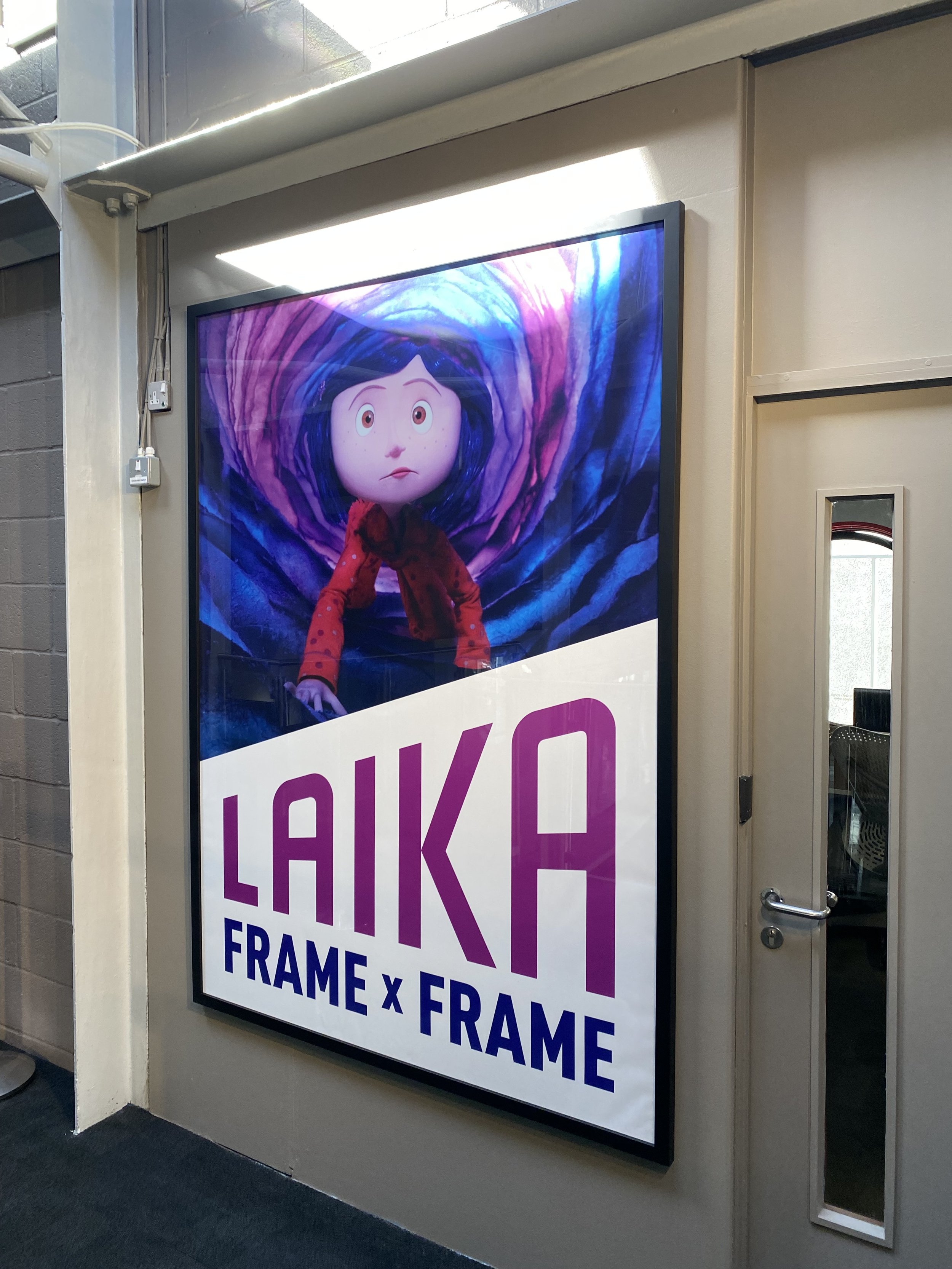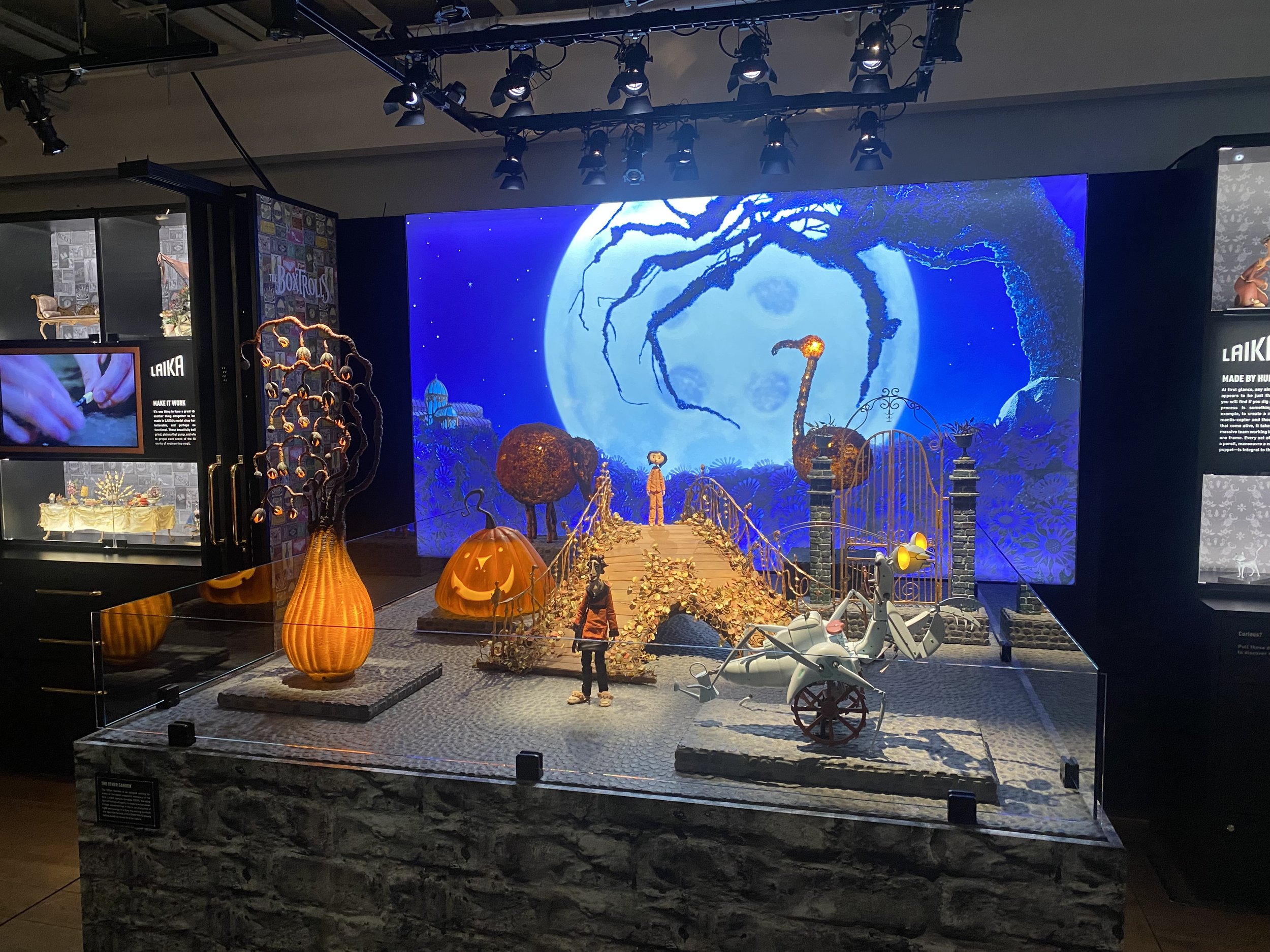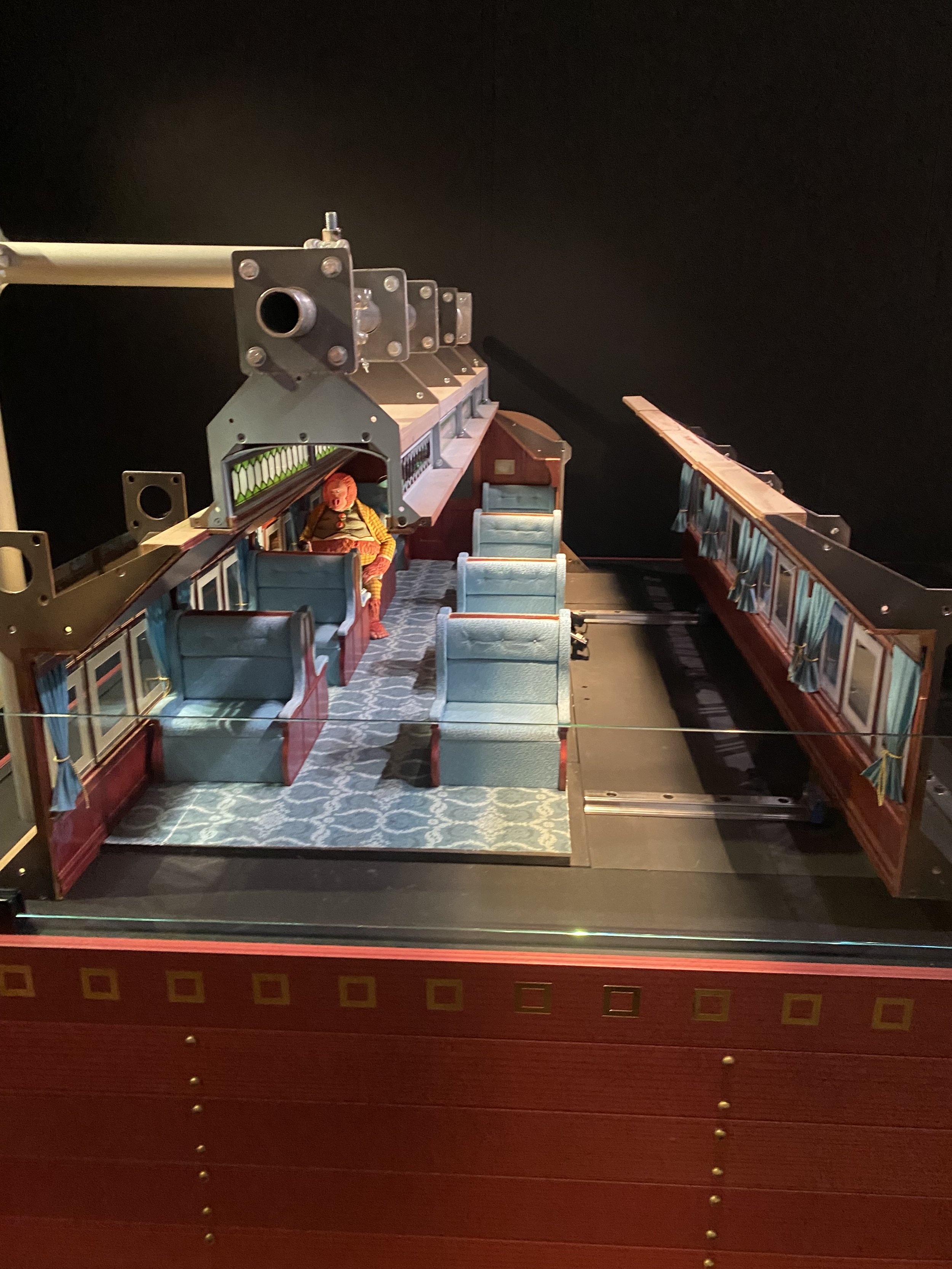Review: LAIKA: Frame x Frame (BFI Southbank)
The joy of stop-motion films lies in noticing the little details, those intricate features crafted in miniature and tucked into the background of a scene, adding a richness of texture to the (usually) fantasy world onscreen. It is these little details that are celebrated by the British Film Institute’s new exhibition LAIKA: Frame x Frame, opening on August 12th and running until October 1st at the BFI Southbank, as part of their Stop Motion: Celebrating Handmade Animation on the Big Screen season (Fig. 1). With over 700 artefacts on display, walking through the exhibit evokes the very best stop-motion viewing experience, each glance revealing another miniscule, yet exquisitely modelled feature.
LAIKA studios, founded in 2005 in Portland Oregon, has always prided itself on combining scientific and technological innovation with analogue animating techniques to push the boundaries of one of cinema’s oldest forms. Vast expanses, complex structures, and dizzying special effects dominate each of their five films: Coraline (Henry Selick, 2009), ParaNorman (Sam Fell & Chris Butler, 2012), The Boxtrolls (Graham Annable & Anthony Stacchi, 2014), Kubo and the Two Strings (Travis Knight, 2016), and Missing Link (Chris Butler, 2019).
Frame x Frame seeks to recognise the immense amount of work that goes into the creation of LAIKA’s films. To do this, the exhibitors have cleverly opted to focus on a single frame from each movie, surrounding it with a cluttered collage of props, behind the scenes footage, and most excitingly, scale replicas of the film sets (Figs. 2-4). The almost overwhelming number of things on display does a wonderful job of impressing the labour involved. Getting up close to the physical components that make up these films, you cannot help but notice the level of detail, or appreciate how mammoth an undertaking any single frame in this medium truly is. In the ParaNorman section, for instance, I examined the eponymous characters backpack only to notice a tiny, embroidered skull, too intricate to feature prominently onscreen but present all the same.
In his opening speech about the exhibition, LAIKA Event and Production Marketing Senior Manager Dan Pascall stated that the challenge of showing off LAIKA’s work rests in “getting across that our 300,000 square foot studio gets contained within a frame.” It’s easy to see what he means. Videos and placards dotted around the props direct visitors attention to the unseen labours; armatures hidden inside puppets, sketch artists doing initial character designs, engineers creating adaptable sets, and a whole host of VFX artists that bring LAIKA’s colourful worlds to life.
It is wonderful that LAIKA wants to acknowledge all that work, but their efforts are slightly undercut by the static nature of the exhibition itself. As fascinating as it is to see these sets, they are by necessity suspended in animation, still models placed in intricate but unmoving tableau. For a medium so defined by movement, the lack of screens showing scenes from the movies, or detailed behind- the-scenes constructions of the chosen sequences, felt like an odd choice. We are told, repeatedly, that LAIKA is at the forefront of technological innovation, but we are only shown the physical, the material. Perhaps this is unsurprising, a reflection of stop-motion’s longstanding characterisation as an alternative, deliberate preservation of traditional techniques in the face of technological industrialisation. There is just a fundamental sense that, in trying to preserve the magic of bringing objects to life, LAIKA has undersold the contributions of the many artists and animators that make this possible, the very artists and animators they want to celebrate.
That being said, there is much to enjoy about this exhibition. Fans of LAIKA will be delighted by the reconstruction of the Other Father’s Garden at the entrance, a chance to literally step into the textured, bright, and more than a little sinister worlds that the studio has so lovingly put-together (Fig. 5). Fans of animation in general will find this an intriguing cabinet of curiosity, filled to the brim with those ‘blink and you miss it’ details that usually wind up on Instagram or YouTube videos as ‘easter eggs.’ For everyone else, these gorgeous sets with their finely-crafted models are like the world’s most high quality dollhouses, and a stroll around Frame x Frame will catapult you right back to your childhood, walking around a toy shop and squealing with delight.
Frame x Frame is part of the BFI Southbank Stop-Motion season, showing a range of films from August 23 to October 9, 2024.
**Article published: August 8th, 2024**
Biography
Markus Beeken graduated with a BA in English Literature from Brasenose College, Oxford and an MA in Film Studies from King’s College London. He is now studying for his PhD at King’s College London.





